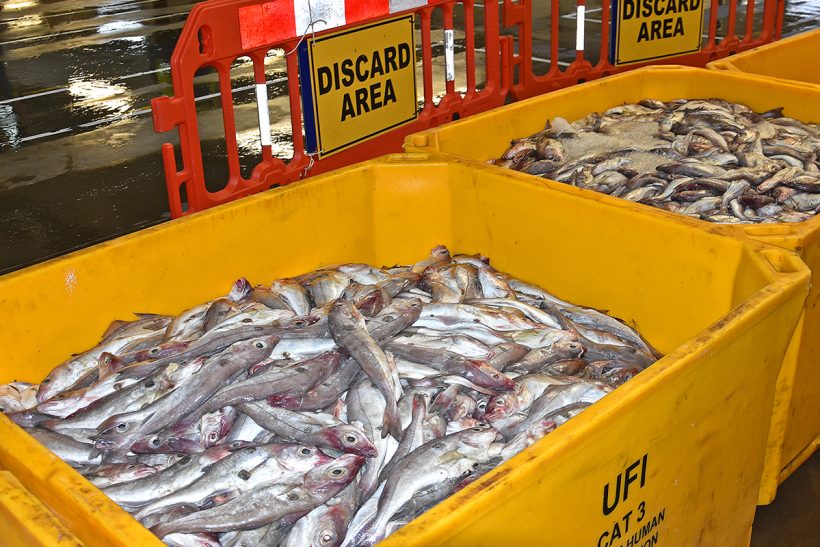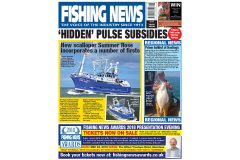More measures will be needed to avoid choke tie-ups
A North Sea regional group has warned of the dangers of a choke species ‘big bang’ when the discards ban comes fully into force on 1 January next year, unless more measures are taken to address the problem, reports Tim Oliver
The North Sea Advisory Council says the EU Council of Ministers will have to adopt measures beyond those currently available to tackle the problem – including possible changes to the legislation.
The NSAC makes these comments in its response to joint recommendations of the North Sea and North Western Waters groups on the legislation that will bring in the full implementation of the landings obligation on 1 January, 2019.
There has been ‘considerable progress’ in improving gear selectivity and fishing strategies to minimise unwanted catch, but advances in selectivity ‘will not solve all choke problems in the time required’.
Phasing-in the introduction of the landing obligation has been ‘only a partial success’, says the NSAC. Because the difficult species have been put to one side, ‘unresolved’ issues remain. “This will mean that 2019 will be the ‘big bang’ that we had all hoped to avoid,” says the NSAC.
Work within the regional groups has focused mainly on what are described as category 3 chokes – those where there is insufficient quota in a sea basin across a number of member states.
But there are ‘a very large number’ of potential chokes associated with the way that quota is distributed between and within member states – category 1 and 2 chokes, says the NSAC.
“Much work has to be done between now and 1 January, 2019 to remove this type of choke. We do not underestimate the practical issues and political sensitivities involved, and have repeatedly stated in our advice that political will and stamina will be needed to address these issues.”
“Much work has to be done between now and 1 January, 2019 to remove this type of choke”
Another type of choke where solutions are needed is category 4 – ‘economic’ chokes that result not from a shortage of quota but from a situation where ‘the sheer bulk of unwanted catch threatens the viability of the trip and therefore the fishing business’.
These occur, for example, in some plaice fisheries where there can be large amounts of fish below the minimum size that have to be landed and counted against quota.
Discard estimates
There is also a problem with uncertainty about the discard estimates that underpin quota uplifts – the extra quota added to TACs to replace the former discards. This means that there could be ‘a significant misalignment’ of available quota with actual catches.
The NSAC acknowledges the ‘complexities and political sensitivities’ involved in trying to find answers to the problem of category 2 chokes – those caused by the current distribution of quotas in specific fisheries.
In this context, it notes that:
- Relative stability remains enshrined in CFP regulations as the basis for quota distribution between member states
- It is wrong to reward those who have done less to reduce unwanted catch, compared to others who have tried
- Crude and ill-informed interventions in allocating quota can be disruptive to national systems and generate unintended consequences
- The system of international and internal domestic in-year and post-year quota swaps is well developed. It already involves thousands of transactions each year to move quota from where there is a surplus to where there is a deficit.
But chokes caused by a misalignment of quotas must still be addressed. The NSAC urges member states to use the period between now and the full implementation of the landing obligation next year to examine how ‘an enhanced system of information and subsequent voluntary quota transfers might operate’.
Because the North Sea demersal fisheries are highly dynamic and variable, it is very difficult to predict chokes. Eco-system changes cause fish to move to different areas, and this means stocks can be out of step with management areas and the quota allocations linked to them.
Again, it is sometimes difficult for stock assessments to establish the size of year-classes entering the fishery, which makes setting a relevant TAC difficult. So it is essential to keep up data collection on the less important economic species, because they may become choke species.
The paper looks at the different tools available to reduce discards – de minimis, high-survival exemptions, inter-species flexibility, gear selectivity – and analyses how appropriate or effective they might be if applied to specific potential choke species. Much depends on the reasons why a species has choke potential, eg abundance out of line with quota, stock distribution changes following changes in the marine environment, species difficult to avoid.
“Different mitigation options may be more or less applicable, depending on the choke category,” says the NSAC paper. But it can be difficult to accurately define a potential choke as the category can differ depending on the data used. It can also change depending on stock and quota development.
The NSAC says that for some fisheries and species, the measures available will go a substantial way to mitigating the risk of chokes in mixed fisheries.
But they will not be sufficient to eliminate the choke risk in the North Sea demersal fisheries, and further actions by the Council of Ministers, and possibly the co-legislators, may be required.
Potential choke stocks
The paper identifies the following North Sea stocks as the most likely potential chokes in 2019, and possible appropriate mitigating measures and their limitations:
Cod (including 7d)
The majority of discarded cod are above the minimum size (MCRS). The high discard rate in the UK (about 33%) is a result of insufficient cod quota in a mixed fishery.
Hake
The Northern stock is within safe biological limits. Catches and discards have increased with the increasing spread of hake into the North Sea. In 2016, Scotland discarded 3,997t, which was more than the total North Sea TAC of 3,492t. Improvements in selectivity are unlikely due to the size of discarded fish.
Ling
Ling is expected to become an unavoidable by-catch choke species for some fisheries in the North Sea.
Plaice
Despite progress in reducing unwanted catch and understanding survival rates of plaice caught with different gears in different conditions, it is unlikely that this important work will be able to deliver definitive results this year. Catches will probably represent an ‘economic’ choke – when the sheer bulk of catches makes the trip uneconomic.
Saithe
Resolving the choke problem in the saithe fishery revolves around ensuring that the system of quota swaps and transfers works effectively, while reflecting relative stability. The significantly increased TAC in 2017 has eased potential difficulties.
Sea bass
Catch and by-catch limits in mixed fisheries create a conflict between a requirement to land all sea bass and a requirement to discard unavoidable by-catch. The quota flexibilities that are available to species under TAC and quota are not available under catch limits and the various derogations.
Options to address the choke risk posed by this stock appear to be limited. It is recommended that the management approach to sea bass should be thoroughly overhauled at the December Council to make it compatible with the landing obligation. More detailed advice on sea bass will be submitted later this year.
Skates and rays
The NSAC supports the proposal for a temporary (three-year) high-survival exemption for the North Sea and the Skagerrak/Kattegat under the condition that:
- A clear time path is provided and followed by all member states on the filling of the data gaps.
- It is made clear how the avoidance, selectivity and survival methods implemented by the sector are to be monitored and controlled.
Whiting
Although there has been progress with regard to improving selectivity, further reduction of unwanted catches will take time to deliver. In the meantime, the measures available are unlikely to prevent chokes.






